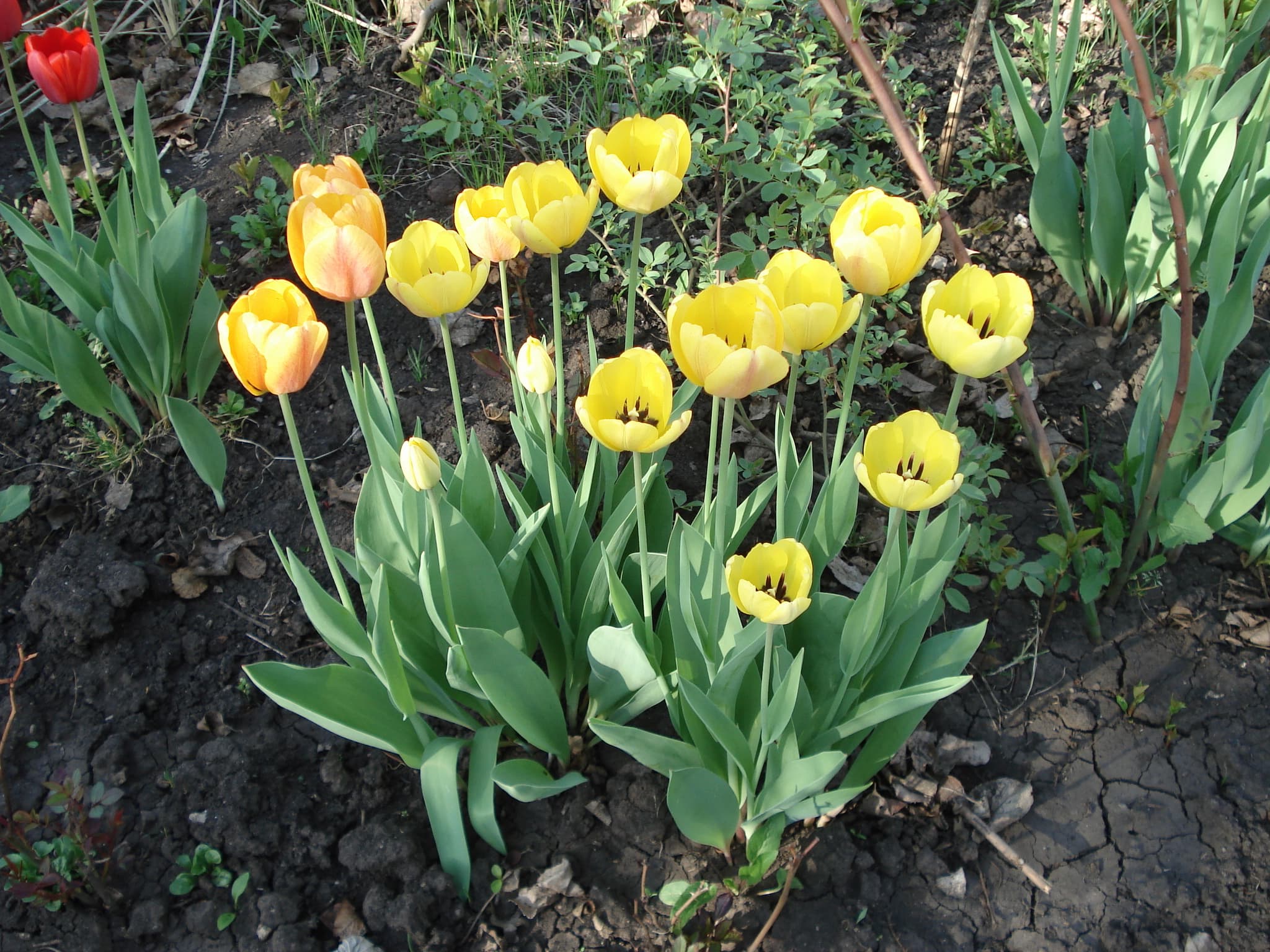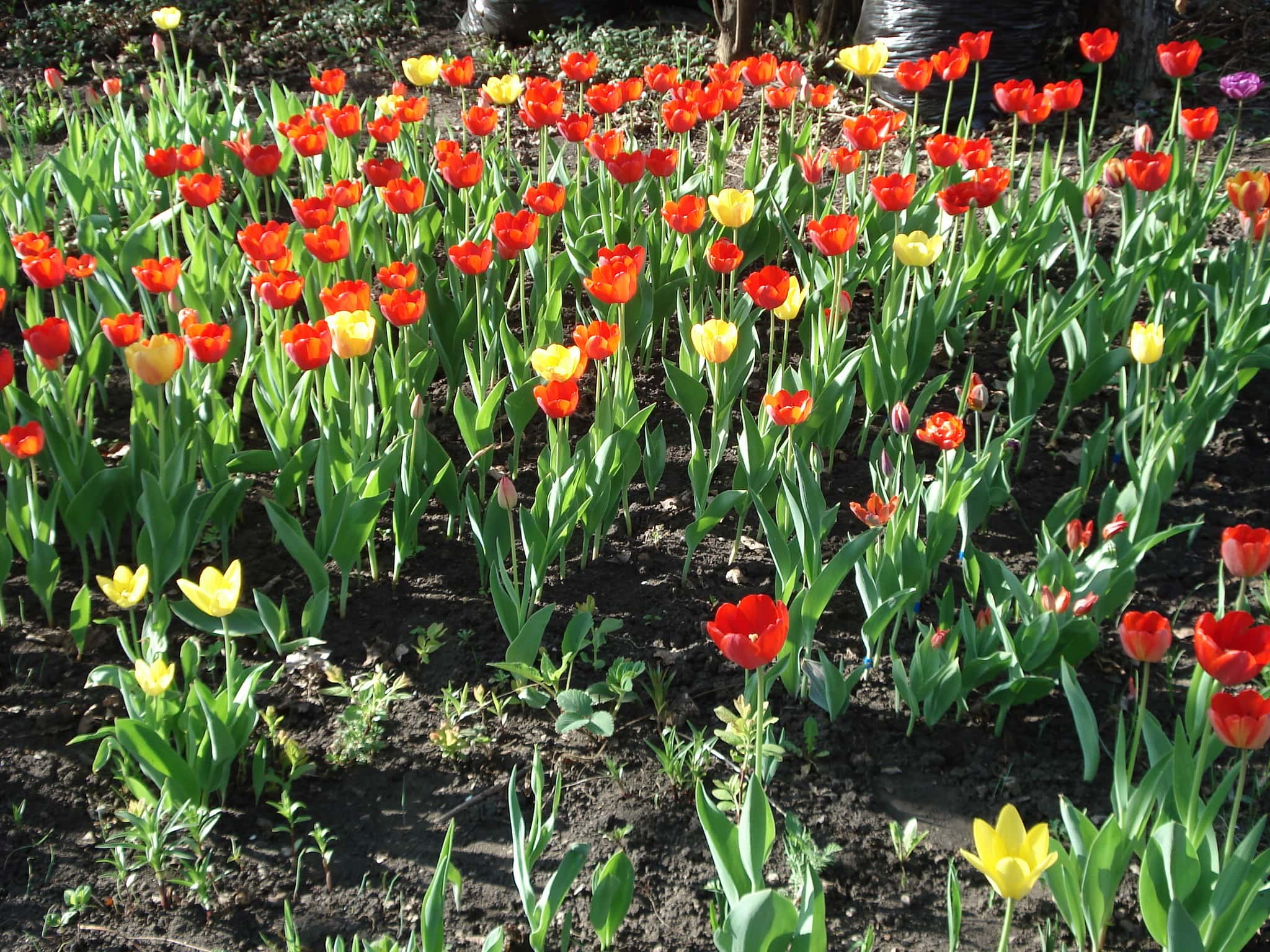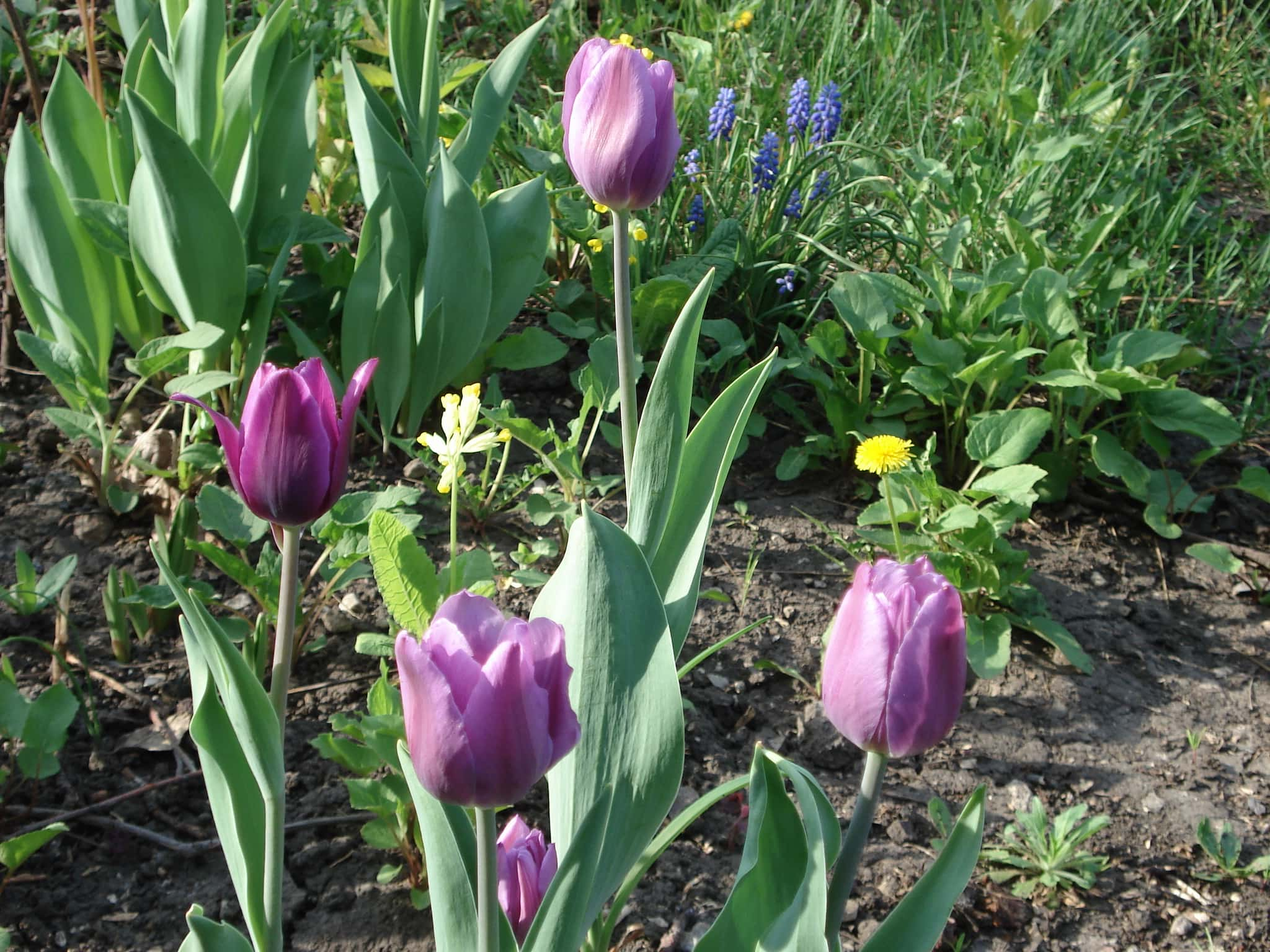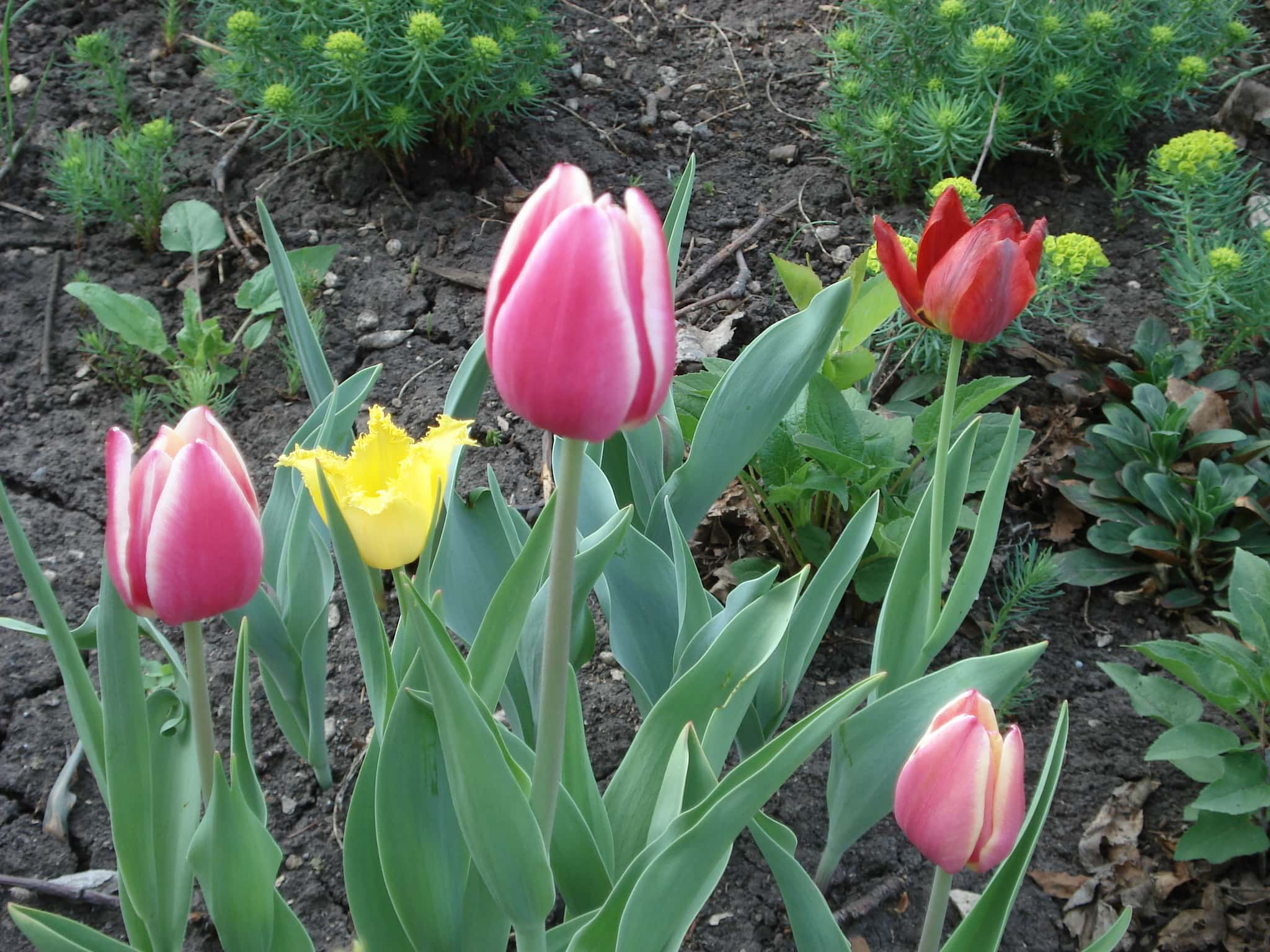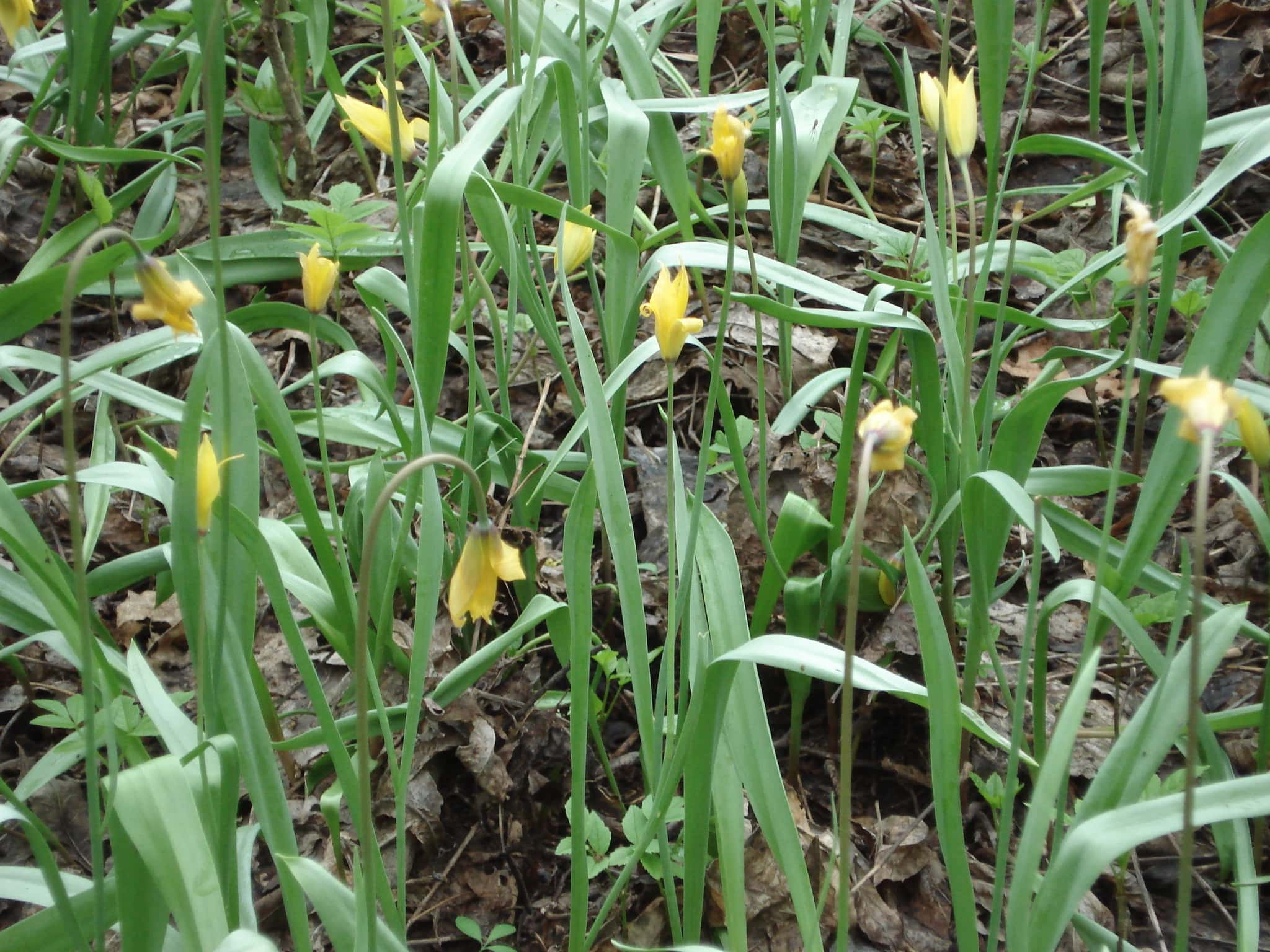- Lyudmila Mikhailovna, please tell us how many "wild" tulips are known and where do they come from?
"According to botanists, there are from 100 to 113 (according to some experts, up to 140!) species of tulips in wild nature. By their nature, these are plants of the steppes and the highlands – up to 3 thousand meters above sea level. The core center of their species diversity is the triangle limited by the Tian Shan and the Pamir-Alai mountain ranges.
In general, wild tulips grow from Northeastern China and Japan to Central and Southwestern Asia, North Africa and Europe. Up to 65 species of tulips are represented in Central Asia and Kazakhstan, up to 36 species of natural flora are found in the Iranian Highlands, up to 20 – on the Balkan Peninsula, and about 18 species – in Turkey.
Their biology is defined by the word "ephemeroids" – herbaceous perennials with quick seasonal development, "retiring" soon after flowering and maturation of seeds, as the hot and arid summer sets in.
The bulb preserved in the soil gives rise to the flowering shoot of the next year and new bulbs replacing it. Development from seed to the blooming stage of the plant takes several years”.
- How many species of wild tulips grow in the Samara Region?
"In the Samara Region, two species of the Tulip genus have been documented: the Bieberstein tulip and the Schrenck tulip, both of them are included in the second edition of the Red Data Book of the Samara Region. For the extreme south of the region, two more species – the two-flowered tulip and the drooping tulip – were previously indicated.
The Bieberstein tulip is widespread in various districts of the region, forms numerous groups on the forest edges, steppe meadows, and in the undergrowth of deciduous woods. Its graceful yellowish flowers usually open in early May, but this spring the blooming of the species was over before the end of April.
The Schrenck tulip is occasionally found in the southern districts of the Samara Region, where fragments of steppe vegetation have been preserved, including those that have received the status of natural monuments. Bright yellow, scarlet, purple, white flowers of this tulip usually bloom steppe landscapes in late April – early May, standing out against the background of grayish remnants of last year’s grasses".
- When and where were tulips first cultivated?
"Tulips are assumed to be first cultivated in Persia. From there, they got to Turkey, where they quickly won flower growers’ love. By the beginning of the 14th century, about 300 garden varieties of tulips, affectionately called "lale", were already grown here.
It was from Turkey (the Ottoman Empire), during the reign of Sultan Suleiman the Magnificent, that tulip bulbs were brought to Vienna by the ambassador of the Holy Roman Emperor O. Busbecq. Growing tulips, Carolus Clusius, Director of the Vienna Garden of Medicinal Plants, sent their seeds and bulbs to his colleagues. This is how tulips got into the gardens of Leiden University in the Netherlands, where they first bloomed in 1594. Thirty years later, a real boom in their popularity began here".
- Which species became ancestors of the first garden varieties of tulip?
"It is believed that the initial garden forms and varieties were obtained from two wild species - the Gesner tulip and the Schrenck tulip. However, the wild type of the Gesner tulip has not been found in nature, and the tulips so named are likely to have already been natural hybrids introduced by man to Europe".
- How many varieties of tulips are known now?
"According to the humblest estimates, there are more than 14,000 varieties of tulips, the latest edition of the Classified List and the International Register of Names of Tulips contains over 8,000 varieties. Every year, the Royal Association of Bulb Growers in the Netherlands registers 100-150 new varieties of tulips from all over the world".
- How do experts know about this huge diversity of tulip varieties?
"Dealing with varieties of modern tulips, experts identify 15 classes to be distributed among 4 groups, differing in flowering time and origin. There are also 10 flower shapes, 9 types of coloring the flower base, 16 major color groups – from white to brown".
- What do creators of new varieties of tulips dream about?
"Tulip breeders dream about getting varieties with real black and blue flowers. Another their aim is increasing the flowering time for growing flowers and cut ones. In experiments, the lifespan of tulip flowers has already been achieved from 8 to 16 and even 22 days.
In future, tulip petals can be used for producing extracts rich in anthocyanins, as a new source of food dyes and biologically active compounds. For achieving these goals, it is planned to introduce more molecular biology tools that will make tulip breeding more efficient and faster".

